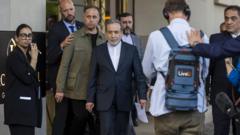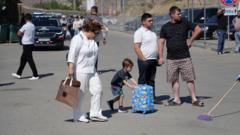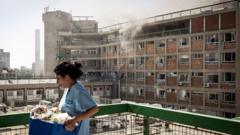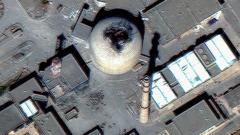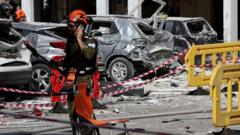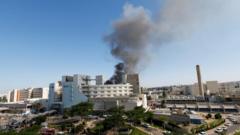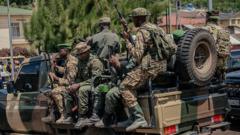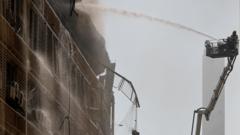With the ongoing conflict in Sudan, the National Museum and other cultural heritage sites have suffered extensive damage and loss, jeopardizing the nation’s historical identity.
The Devastation of Sudan's Cultural Heritage Amidst War
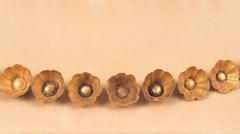
The Devastation of Sudan's Cultural Heritage Amidst War
War has not only ravaged Sudan's infrastructure but has also led to the looting and destruction of invaluable cultural artifacts.
The Sudan National Museum, a keeper of treasures from ancient Nubian civilizations, now stands as a stark reminder of the toll war has taken on Sudan’s cultural landscape. Once adorned with majestic statues of rams and lions and cherished for its intricate Christian wall paintings, the museum was a hub for schoolchildren, tourists, and cultural events. However, the outbreak of conflict two years ago has rendered it a site of ruin.
As the Sudanese military regains control over Khartoum, the extent of the devastation inflicted during the conflict has become increasingly apparent. Government buildings, banks, and the National Museum––a bastion of Sudanese history––have been left in disarray. Ikhlas Abdel Latif Ahmed, a prominent voice in the preservation of Sudan’s heritage, decries the looting and destruction: "They destroyed our identity, and our history."
Prior to the war, the museum was undergoing restoration, with many artifacts securely packed away, ultimately making them easier targets for looters. Reports suggest that tens of thousands of pieces may have been smuggled out, particularly to the United Arab Emirates, likely facilitated by the rival Rapid Support Forces (RSF) that controlled parts of central Khartoum during the chaos.
While the Sudanese government intends to seek international help in retrieving looted artifacts, the challenge remains daunting. Many crucial items, including a significant gold collar once buried with King Talakhamani, are now unaccounted for. Ahmed underscores the invaluable nature of these cultural treasures, stating, "There is no value for the museum artefacts; it's more expensive than you could imagine."
The current regime claims to be taking action against those responsible for the systematic dismantling of cultural sites. However, observers point out that the attacks on museums, schools, and other heritage sites are part of an intentional campaign to obliterate Sudan’s historical identity.
Amgad Farid from the Fikra for Studies and Development highlights the implications of these acts, describing them as an assault on the essence of Sudanese heritage, profoundly affecting the nation’s culture that spans over 7,000 years.
As the war rages on, millions of Sudanese citizens continue to endure untold suffering, with reports indicating approximately 13 million displaced individuals and nearly 150,000 deaths since the start of hostilities. "The war is against the people of Sudan," laments Ahmed, reflecting both on the human toll and the loss of a rich cultural legacy.
Despite the overwhelming challenges, there remains a flicker of hope among those dedicated to restoring the National Museum and reclaiming lost artifacts. Ahmed firmly states, "Inshallah [God willing], we will get all our collections back. And we build it more beautiful than before." The resilience of Sudan's cultural advocates reflects a tenacity that endures even amidst the darkest of times.
As the Sudanese military regains control over Khartoum, the extent of the devastation inflicted during the conflict has become increasingly apparent. Government buildings, banks, and the National Museum––a bastion of Sudanese history––have been left in disarray. Ikhlas Abdel Latif Ahmed, a prominent voice in the preservation of Sudan’s heritage, decries the looting and destruction: "They destroyed our identity, and our history."
Prior to the war, the museum was undergoing restoration, with many artifacts securely packed away, ultimately making them easier targets for looters. Reports suggest that tens of thousands of pieces may have been smuggled out, particularly to the United Arab Emirates, likely facilitated by the rival Rapid Support Forces (RSF) that controlled parts of central Khartoum during the chaos.
While the Sudanese government intends to seek international help in retrieving looted artifacts, the challenge remains daunting. Many crucial items, including a significant gold collar once buried with King Talakhamani, are now unaccounted for. Ahmed underscores the invaluable nature of these cultural treasures, stating, "There is no value for the museum artefacts; it's more expensive than you could imagine."
The current regime claims to be taking action against those responsible for the systematic dismantling of cultural sites. However, observers point out that the attacks on museums, schools, and other heritage sites are part of an intentional campaign to obliterate Sudan’s historical identity.
Amgad Farid from the Fikra for Studies and Development highlights the implications of these acts, describing them as an assault on the essence of Sudanese heritage, profoundly affecting the nation’s culture that spans over 7,000 years.
As the war rages on, millions of Sudanese citizens continue to endure untold suffering, with reports indicating approximately 13 million displaced individuals and nearly 150,000 deaths since the start of hostilities. "The war is against the people of Sudan," laments Ahmed, reflecting both on the human toll and the loss of a rich cultural legacy.
Despite the overwhelming challenges, there remains a flicker of hope among those dedicated to restoring the National Museum and reclaiming lost artifacts. Ahmed firmly states, "Inshallah [God willing], we will get all our collections back. And we build it more beautiful than before." The resilience of Sudan's cultural advocates reflects a tenacity that endures even amidst the darkest of times.

